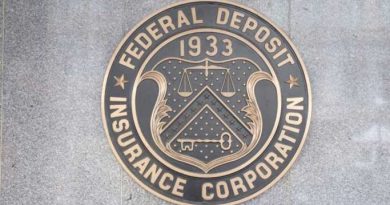Fed's Powell holds fast to 'this year' timeline for bond-buying taper
WASHINGTON (Reuters) – Federal Reserve Chair Jerome Powell, in a speech that affirmed an ongoing U.S. economic recovery and explained why there is no rush to tighten monetary policy, gave a detailed account on Friday of why he regards a spike in inflation as temporary and offered no signal on when the central bank plans to cut its asset purchases beyond saying it could be “this year.”
In remarks to the annual Jackson Hole economic conference, Powell indicated the Fed will remain cautious in any eventual decision to raise interest rates as it tries to nurse the economy to full employment, saying he wants to avoid chasing “transitory” inflation and potentially discouraging job growth in the process – a defense in effect of the new approach to Fed policy he introduced a year ago.
On the separate and potentially imminent decision by the U.S. central bank to begin reducing its $120 billion in monthly purchases of U.S. Treasuries and mortgage-backed securities, Powell said he agreed with the majority of his colleagues that if job growth continues it “could be approriate…this year.”
The weeks since the Fed’s policy meeting in July “brought more progress” towards repairing the jobs market, Powell said, with nearly a million positions added and continued progress expected.
But it also coincided with “the further spread of the Delta variant” of the coronavirus, Powell noted, raising risks that would need to be evaluated as the debate over the bond-buying “taper” continues ahead of the Fed’s Sept. 21-22 policy meeting.
In the days before Powell’s speech, several Fed regional bank presidents said they were eager to get a taper underway, and to reduce the asset purchases fast, with some arguing the shift was needed to prepare for interest rate increases that may be needed sooner than expected.
Data released earlier on Friday showed inflation continuing to rise. The personal consumption expenditures (PCE) price index, a key inflation gauge watched by the Fed, was up 4.2% in the 12 months through July, the third straight month it has been at least double the central bank’s 2% target.
Powell, however, was non-committal, and gave no precise indication of when a reduction in bond purchases might start.
“We will be carefully assessing incoming data and the evolving risks,” he said, signaling that Fed discussions about exactly when to reduce the bond-buying program not only remain unresolved, but must be squared against the health and economic risks posed by the highly contagious Delta variant.
Stocks were trading higher after Powell’s speech, with the benchmark S&P 500 index hitting a record high, as investors took the view that Powell was signaling no rush to tighten policy. Treasury bond yields edged lower and the dollar weakened against a basket of trading-partner currencies. “Powell understands that tapering will happen, but it’s not going to happen sooner than later,” said Kim Forrest, chief investment officer at Bokeh Capital Partners in Pittsburgh.
‘PREPARED TO ADJUST’
Powell’s remarks offered a broad road map of where the U.S. central bank stands as it moves away from policies rolled out to counteract the pandemic’s economic shock, while also accounting for the fact that the health crisis has not passed, and that millions of Americans remain out of work as a result of it.
The pivot away from asset purchases now appears just a matter of time, as long as robust U.S. job growth continues through August and into the fall.
Fed officials have said they expect the resurgent health crisis will not throw the recovery off track, though concerns about COVID-19 risks did force the central bank itself to move its Jackson Hole symposium from a mountain resort in Wyoming to a virtual event for the second year in a row.
Expectations for continued job growth are in part based on reopened schools, eased childcare constraints, and a steady return to consumer spending on close-contact activities – developments that may be influenced by the worsening outbreak.
Fed officials “expect to see continued strong job creation. And we will be learning more about the Delta variant’s effects,” Powell said in his speech. “For now, I believe that policy is well positioned; as always, we are prepared to adjust.”
The next major decision, of when to raise the benchmark overnight interest rate from the current near-zero level, will be subject to a “substantially more stringent test,” Powell said, that satisfies Fed officials that the economy has reached maximum employment and inflation is sustainably at the 2% target.
Powell, who spearheaded the new policy framework put in place by the Fed last year, is being considered by President Joe Biden for a second term as head of the central bank. Powell’s current term expires early next year.
Much of Powell’s speech on Friday was devoted to an exposition of why he feels current high inflation does not necessarily meet the test because it is likely to pass, with the reasons ranging from supply chain bottlenecks that are likely to ease to globalization acting as an anchor on prices.
While the current fast pace of price increases is “a cause for concern,” Powell said it would also be damaging if the Fed jumped the gun with a premature decision to hike rates.
“We have much ground to cover to reach maximum employment, and time will tell whether we have reached 2 percent inflation on a sustainable basis,” Powell said.
“If a central bank tightens policy in response to factors that turn out to be temporary … the ill-timed policy move unnecessarily slows hiring and other economic activity and pushes inflation lower than desired. Today, with substantial slack remaining in the labor market and the pandemic continuing, such a mistake could be particularly harmful.”
Source: Read Full Article


